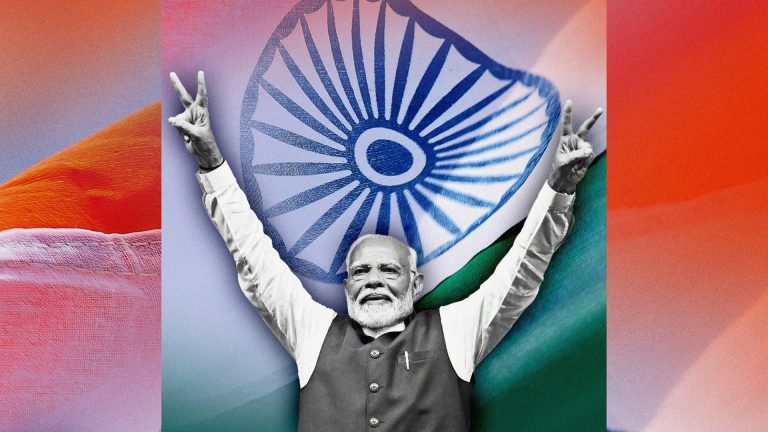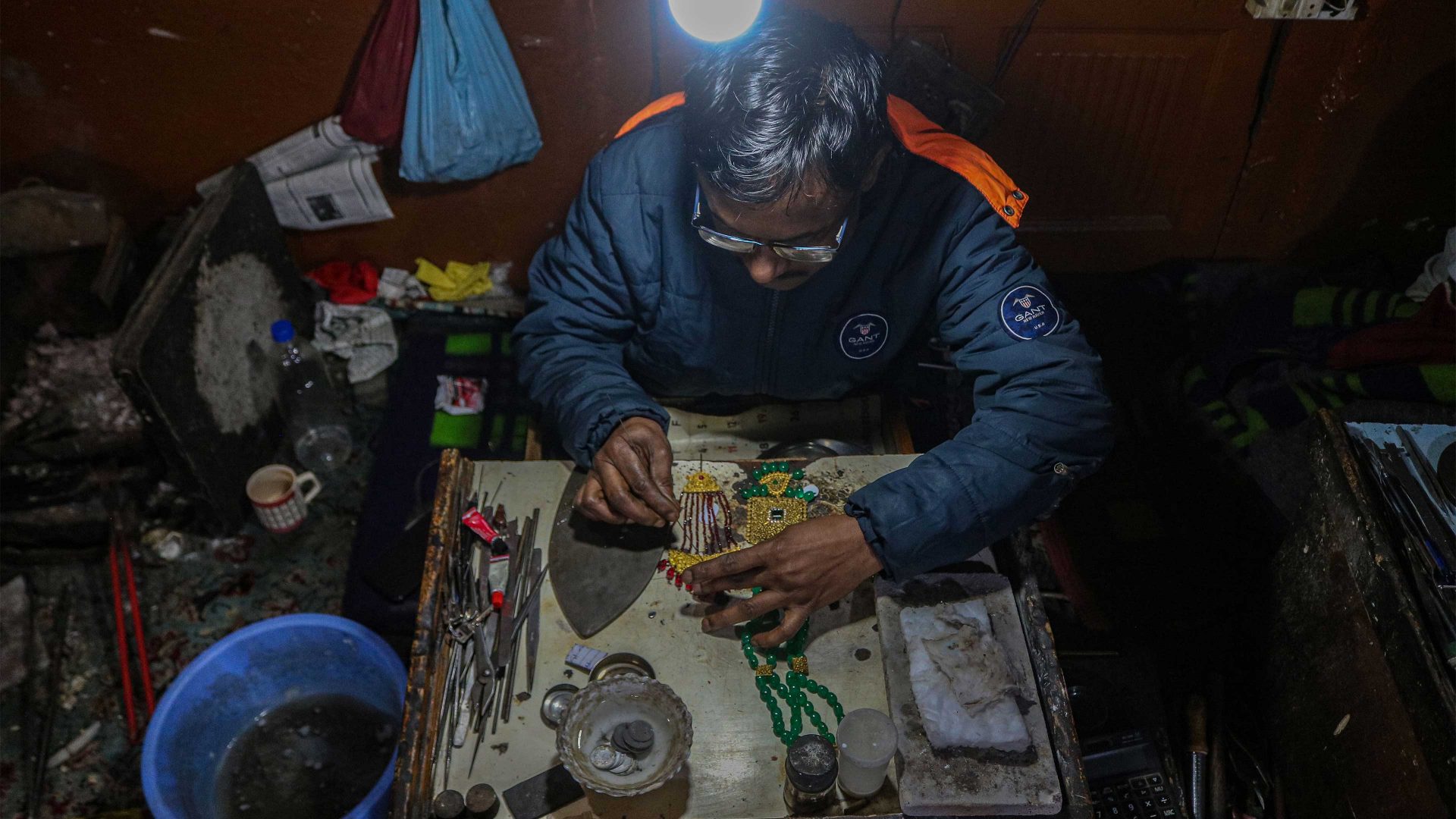Ponnan Shanmugam has been crafting earrings for decades, insisting that no man or machine in the world could replicate the intricate creations shaped by his hands.
The 74-year-old goldsmith from Coimbatore, a once-thriving southern Indian town known for exquisite handcrafted jewellery, is now a relic of a fading era. Coimbatore was once dotted with small-scale workshops and buzzing artisanship. Today, the place is silent, and feels abandoned.
“I’m likely to be the last goldsmith in my home as none of my children want to take this up. The art of making these earrings will die with me,” said Shanmugam in a voice shifting between indifference and quiet resignation.
The old-world charm of carving heavy, ornamental gold pieces by hand – traditionally worn on the ankles and the nose – is slowly slipping out of India’s culture. Once ubiquitous in local bazaars, these unique pieces are being replaced by lighter, machine-cut, mass-produced designs with standardised patterns.
India’s vast and diverse cultural tapestry means that each state has its own jewellery traditions. Every region has artisanal hubs, often entire neighbourhoods of skilled goldsmiths running family-owned businesses. Coimbatore in Tamil Nadu, Kodungallur and Koduvally in Kerala, Jaipur in Rajasthan, and Zaveri Bazaar in Kolkata were once alive with craftspeople. Today, these hubs are shadows of their former selves.
The crisis confronting India’s goldsmiths is more than just economic. It reflects a profound erosion of cultural heritage. The country’s ancient texts like Shilpa Shastras once laid down the aesthetic guide for jewellery-making, from lost wax casting to minute hand engraving. But these techniques are vanishing.
A 2019 survey estimated that over 40,000 goldsmiths in Coimbatore alone had been affected by the influx of machine-made jewellery, forcing many into daily-wage work. Another study in Mysuru found evidence of stagnant incomes, poor working conditions, and a collapse in apprenticeship networks that once formed the backbone of the trade.
Suggested Reading


India’s missed opportunity
The picture is just as bleak elsewhere. Thrissur in Kerala, once known as the gold capital of south India, still hosts over 47,000 craftsmen, but many still operate from shrinking, poorly equipped clusters with limited access to credit or modern tools. The state of Karnataka, which had nearly 1.8 million goldsmiths at the start of this century, now counts just about 300,000.
“The goldsmiths’ community is utterly fragmented and business is highly unorganised,” said Ramamurthy Vishwakarma of the Karnataka Goldsmiths Association. “There is a lack of fraternity among us and so it becomes difficult for us to speak our collective opinion in a singular voice.”
Bigger corporations with deep pockets consolidate their hold over the gold trade by importing bullion at lower costs and investing in sophisticated machinery. Smaller artisans have been left defenceless.
“Many goldsmiths struggle for even three meals a day. The trend is irreversible unless a miracle happens. I’m 100% sure there’ll be no more skilled goldsmiths in the future. We’ll soon remain only in memory,” Vishwakarma added.
Ironically, this decline is unfolding at a time when India’s appetite for gold remains high. The precious metal retains an enduring place in Indian life, from naming ceremonies to weddings and even funerals. Gold is also considered a hedge against inflation.
Prices have surged dramatically over the past decade. What cost INR26,000 (£225) for 10 grams of 24-carat gold a few years ago now hovers around INR85,200 (£735). Demand remains strong as jewellery showrooms bustle during festival seasons and the wedding months.
Nitin Kedia, national general secretary of the All India Jewellers and Goldsmiths Federation points to the lack of policy support as a major reason for the profession’s collapse. “The government is working with its eyes shut. There is no dedicated government policy to address the concerns of goldsmiths. Even the tangential ones which may include these workers are not reaching them,” he said.
Without structural support, India’s living tradition of artisanal goldwork teeters on the edge of extinction. What was once passed from hand to hand across generations now risks becoming a forgotten craft, consigned to museum shelves and fading memory.
Vasudevan Sridharan is a journalist based in south India



